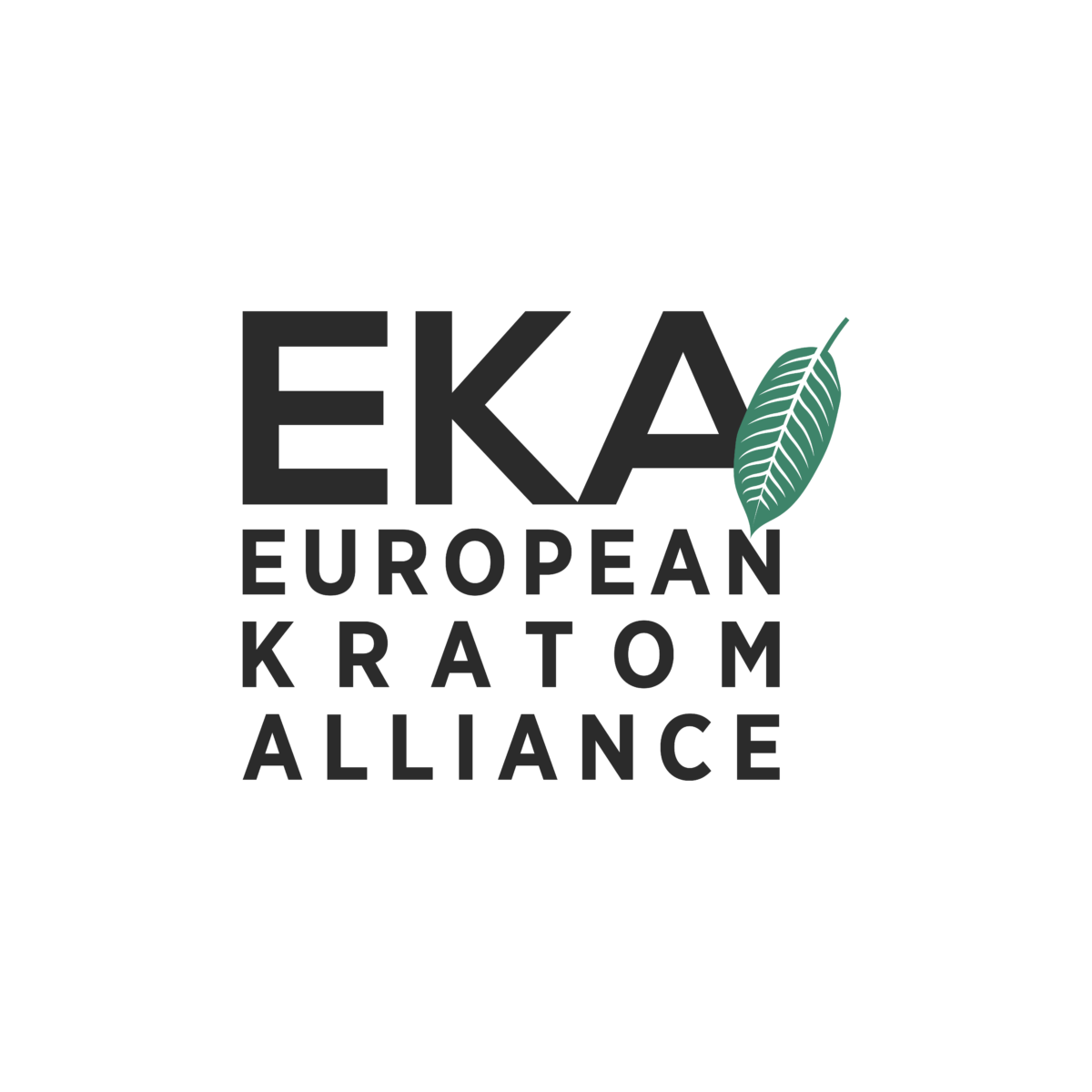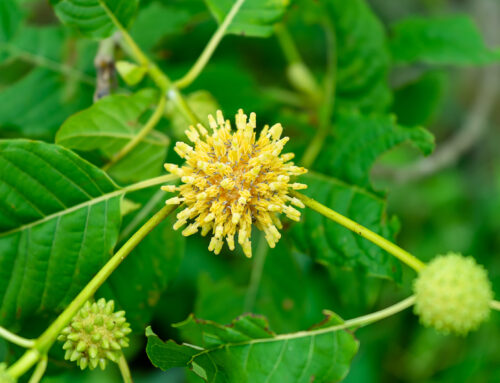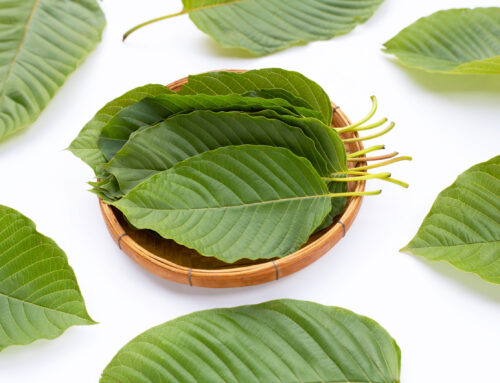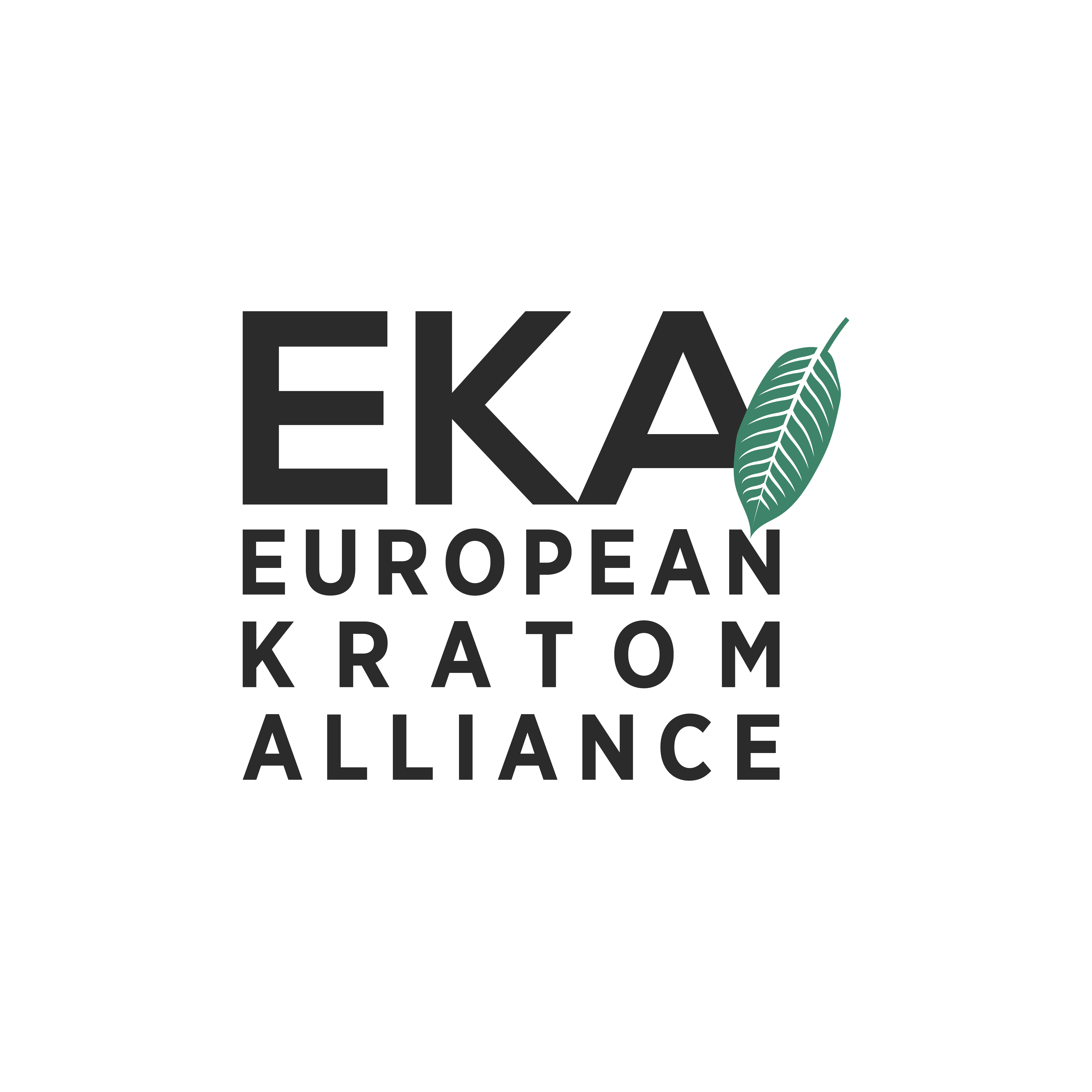| Eine Vorprüfung von Kratom (Mitragyna speciosa), einem Baum, der in Südostasien heimisch ist, und seinen zwei wichtigsten psychoaktiven Alkaloiden (Mitragynin, 7-Hydroxymitragynin) steht auf der Tagesordnung des 44. WHO-Expertenausschusses für Drogenabhängigkeit (ECDD) für ihr Treffen vom 11. bis 15. Oktober 2021. Kratom und seine Inhaltsstoffe wurden bisher nicht von der WHO überprüft und unterliegen derzeit keiner internationalen Kontrolle. Wobei jedoch einige südostasiatische und europäische Länder sowie Australien unterschiedliche nationale Kontrollen eingeführt haben. Wie kam Kratom auf die Tagesordnung des ECDD? Und wie stehen die Chancen, dass dieser Prozess letztendlich dazu führen wird, dass Kratom unter internationale Kontrolle gestellt wird?
*8. Oktober 2021 – Vorabkopie beim ECDD eingereicht Martin Jelsma – Transnationales Institut Laden Sie den vollständigen Kommentar hier herunter. In diesem Kommentar werfen wir zunächst einen Blick auf die Entwicklungen in Südostasien, wo die Kriminalisierung von Kratom nach der Drogenkriegserklärung von Premierminister Thaksin in Thailand im Jahr 2003 erheblich zugenommen hat. Diese verstärkte Strafverfolgung in der Region brachte Kratom auf das Radar des SMART-Programms der UNODC. Doch Thailand, wo die repressive Durchsetzung des Kratom-Verbots nach Thaksins Drogenkrieg dramatische Ausmaße angenommen hatte, hob das Verbot im August 2021 auf. Anschließend betrachten wir, wie Kratom zum Anliegen wurde, als es als “Neue psychoaktive Substanz” (NPS) gekennzeichnet wurde und wie Verfahren, die eingesetzt wurden, um den Zeitplan für NPS zu beschleunigen, insbesondere die Frühwarnberatung der UNODC, Kratom auf die Tagesordnung des ECDD brachten. Die Ursprünge der WHO-Vorprüfung von Kratom werfen grundlegende Fragen über das Zeitplanverfahren auf, insbesondere über die Auswirkungen der Einordnung einer Pflanze mit langer Tradition traditioneller Nutzung im NPS-Kontext und die Rolle der UNODC im Prozess. Abschließend untersuchen wir die verschiedenen Szenarien, die sich ergeben könnten, und bewerten das Risiko, dass – wieder einmal – wahrgenommene Probleme mit bestimmten pflanzlichen Substanzen im Globalen Norden zu einer weltweiten Verurteilung jahrhundertealter und weitgehend unproblematischer Umgangs mit psychoaktiven Pflanzen im Globalen Süden führen würden. Kratom in Südostasien Kratom oder Ketum ist ein einheimischer tropischer Baum in Teilen Thailands, Malaysias, Myanmars, Indonesiens, Papua-Neuguineas und der Philippinen. Die Blätter werden traditionell von Frauen in Dörfern als Hausmittel gegen allgemeine Beschwerden wie Fieber, Husten, Durchfall, Bluthochdruck, Diabetes, Rheuma, Schmerzen und Angstzustände verwendet. Männer kauen hauptsächlich die Blätter oder trinken morgendlich Kratomtee, um ihre Produktivität zu steigern und Müdigkeit zu bekämpfen, und abends, um sich zu entspannen. Kratom dient daher auch als Ersatz für Alkohol unter Muslimen. Als Opiumkonsum noch üblich war, wurde Kratom regelmäßig als Alternative in Zeiten der Knappheit oder hoher Preise verwendet oder um Opiumentzugssymptome zu lindern. Der Wettbewerb mit Opium war der Hauptgrund für die Einführung des Kratom-Gesetzes von 1943 in Thailand, als Opium noch unter staatlichem Monopol legal war. Dies war das erste nationale Kratom-Verbot in der Region und wurde anfangs nur locker durchgesetzt. Im Jahr 1979 stufte Thailand Kratom unter das Narcotic Drugs Act in Kategorie V ein, in die gleiche – am wenigsten restriktive und strafende – Kategorie wie Cannabis, Opium und halluzinogene Pilze, was es illegal machte, Kratom zu verwenden, zu kaufen, zu verkaufen, anzubauen oder zu ernten, und erforderte, dass vorhandene Baumbestände gefällt werden. Myanmar folgte 1993 mit einem ähnlichen Verbot, und Malaysia unterstellte Kratom 2003 dem Poison Act von 1952, der sich hauptsächlich auf den Besitz und Handel von Kratom konzentriert und nicht auf den Konsum oder Anbau. Die repressive Durchsetzung des Kratom-Verbots in Thailand begann erst richtig mit Thaksins Drogenkrieg, der zwischen Februar und April 2003 für etwa 3.000 außergerichtliche Tötungen verantwortlich war. Thaksins Politik heizte auch den Konflikt in den überwiegend muslimischen südlichen Provinzen an, wo in den folgenden Jahren mindestens 5.700 Menschen getötet wurden, insbesondere unter der ethnischen malaiischen Bevölkerung. Die Strafverfolgung von Kratom im Süden des Landes erreichte in den folgenden Jahrzehnten verheerende Ausmaße, einschließlich Massenverhaftungen und militärischer Operationen zum Fällen von Bäumen, was die politischen Spannungen mit den muslimischen Gemeinschaften erheblich verschärfte. Strafverfolgungen wegen des Gebrauchs von Kratomblättern stiegen von etwa 1.000 in 2004-2005 auf 6.000 in 2009 und fast 19.000 in 2018; und Kratom-bezogene Gerichtsfälle machten etwa ein Sechstel der insgesamt mehr als 300.000 Drogen-bezogenen Gerichtsfälle in Thailand zwischen Januar und Oktober 2019 aus. „Indem Kratom mit den malaiischen Aufständischen in Verbindung gebracht und die Substanz verteufelt wurde, konnten die Polizeikräfte die Gemeinschaften der malaiischen Völker ständig überwachen und eindringen unter dem Vorwand, dass sie Kratom polizeilich überwachen.“ Dies führte zu „dem Aufkommen eines neuen Konflikts zwischen Regierungsbeamten und Menschen, die sich für kulturelle Rechte in der Region stark machten“, so die thailändische akademische Forschungsgruppe zu Kratom, die eine entscheidende Rolle beim Aufbau der evidenzbasierten Grundlage für die politischen Veränderungen in den letzten Jahren spielte. Die Razzia fiel auch mit dem Aufkommen neuer Konsummuster unter Jugendlichen zusammen, insbesondere der Beliebtheit eines Cocktails unter dem Namen ‘4×100’ – einer Mischung aus Kratomtee, Hustensaft mit Diphenhydramin oder Codein, einem koffeinhaltigen Softdrink (z.B. Coca-Cola) und Eiswürfeln. Thailands repressiver Ansatz brachte das Thema auf die regionalen Anti-Drogen-Koordinierungsmechanismen der ASEAN und der UNODC und löste eine verstärkte Strafverfolgung gegen Kratom in den Nachbarländern aus. „Kratom wurde 2004 von Thailand als Droge Nummer eins eingestuft“, so der erste Bericht von 2007 des UNODC-Programms zur Verbesserung der Datenerfassung über Amphetamin-Typ-Stimulanzien (ATS) in der Region, obwohl es „2005 nicht aufgeführt wurde und derzeit auf Platz zehn rangiert, mit einem angeblich zunehmenden ‚Missbrauchstrend’“. „Kratom ist in Myanmar und Thailand problematisch“, so der Bericht, der die Verhaftungen von fast 500 Menschen wegen Kratom-Delikten in Myanmar im Jahr 2006 erwähnt. Seitdem haben die SMART-Berichte Daten über Kratom-Beschlagnahmungen und -Verhaftungen enthalten. In Malaysia wurden zwischen 2012-2016 jedes Jahr rund 700-900 Menschen verhaftet. Strafverfolgungsbehörden in Myanmar meldeten die Ausrottung illegaler Kratom-Anbauflächen in der Tanintharyi-Division im äußersten Süden des Landes in 2013 und 2014. Im Jahr 2013 setzte die ASEAN Kratom auf die „Negative Liste der Substanzen für traditionelle Medizin und Nahrungsergänzungsmittel“ und verbot den Handel von Kratom-basierten Produkten innerhalb des ASEAN Raumes (eine Überarbeitung der Liste ist für 2022 geplant). Bereits 2004 hatte Indonesiens Lebensmittel- und Arzneimittelbehörde Kratom zur nationalen Liste der Inhaltsstoffe von Substanzen hinzugefügt, deren Verwendung in traditionellen Medikamenten und Nahrungsergänzungsmitteln verboten war. Diese Regelung, die 2016 erneuert wurde, zielt auf die Kratomherstellung für inländische Märkte ab und verbietet nicht den Konsum und Export von Kratom. Die Nationale Drogenbehörde Indonesiens (BNN) entschied jedoch 2017, Kratom zu ihrer Liste der Neuen Psychoaktiven Substanzen hinzuzufügen und empfahl, Kratom als Betäubungsmittel der Liste I einzustufen. Eine Übergangsfrist von fünf Jahren wurde vereinbart, um alternative Einkommensmöglichkeiten für die geschätzten 112.000 Menschen zu finden, die in Westkalimantan in den Anbau, die Ernte und die Verarbeitung von Kratom involviert sind, hauptsächlich für den legalen Export auf den expandierenden US-Markt. Die Sinnigkeit des Verbots, das die BNN 2019 wiederholte, wurde von lokalen Regierungsbehörden in Westkalimantan sowie vom stellvertretenden indonesischen Minister für Umwelt und Forstwirtschaft in Frage gestellt. Als Reaktion auf diese Kontroverse beauftragte das Gesundheitsministerium seine Forschungsabteilung mit einer Studie, die in einem umfassenden Bericht mündete, der 2019 veröffentlicht wurde. Der Bericht hebt die botanischen und chemischen Eigenschaften von Kratom sowie seine Bedeutung als Lebensgrundlage und traditionelle oder indigene Medizin hervor. Der Bericht betont auch die unterschiedlichen Kontexte, in denen Kratom in Kalimantan angebaut wird, sowie die ökologische Bedeutung von Kratom und sein Potenzial zur Unterstützung nachhaltiger Entwicklung. Die Umsetzung des Verbots wurde nun bis 2024 verschoben, um Zeit für weitere Forschung und Diskussionen zu haben. In Malaysia wurde ein Vorschlag der Nationalen Anti-Drogen-Agentur, Kratom aus dem „Giftgesetz“ zum „Gesetz über gefährliche Drogen“ zu übertragen, durch parlamentarischen Widerstand gestoppt. Die Kratomproduktion in Penang, im Norden Malaysias, stellt eine bedeutende Lebensgrundlage für die lokale Bevölkerung dar. Im März 2019 organisierte Malaysias Nationale Anti-Drogen-Agentur eine Nebenveranstaltung bei der Kommission für Betäubungsmittel zum Thema „Bekämpfung der Bedrohung durch Kratom und Methamphetamin in Malaysia“. Und im März 2020, während der Diskussion der CND über WHO-Zeitplanempfehlungen, forderte Indonesien Aufmerksamkeit für Kratom und sein „hohes Suchtpotenzial“. Studien in der Region haben bestätigt, dass „längerer Gebrauch zu Abhängigkeit und Entzugsproblemen führen kann“, dass die meisten Kratom-Nutzer jedoch in der Lage sind, diese Symptome selbst zu bewältigen und dass es „keine signifikante Beeinträchtigung ihrer sozialen Funktion zu verursachen scheint“. Auch eine Umfrage unter Kratom-Nutzern in den USA, die im ECDD-Vorprüfbericht erwähnt wurde, deutete auf „milde Entzugssymptome“ hin. Inzwischen hat Thailand eine vollständige Kehrtwende in seiner Politik gegenüber Kratom vollzogen. Ab 2019 wurde die Verwendung von Kratom (sowie Cannabis) in traditionellen Medikamenten erlaubt, und Anbau, Besitz und Verwendung in südlichen Dörfern wurden unter einem Gemeinschaftskontrollmodell entkriminalisiert. Dann wurde Kratom im Mai 2021 aus dem Narcotic Drugs Act gestrichen, was am 24. August in Kraft trat. Dieser Schritt hob die meisten Einschränkungen in Bezug auf den Anbau, Handel und Gebrauch von Kratomblättern auf. Diejenigen, die Kratomprodukte herstellen möchten, einschließlich Medikamente, Nahrungsergänzungsmittel und pflanzliche Produkte, müssen eine Genehmigung von der thailändischen Lebensmittel- und Arzneimittelbehörde (FDA) einholen. Gerichte unterer Instanz entschieden 2020 noch über nicht weniger als 50.834 Kratom-Anklagen und 2021 über 22.076 Anklagen; und 11.455 dieser Fälle erreichten die Staatsanwaltschaft. Aber alle diese Akten werden jetzt gelöscht und mehr als 1.000 Menschen, die noch wegen Kratom-Delikten im Gefängnis sitzen, sollen freigelassen werden. „Die Legalisierung von Kratom in Thailand beendet ein Erbe der unrechtmäßigen Kriminalisierung einer Droge, die seit langem in traditionellen, ländlichen Gemeinschaften des Landes verwendet wird“, so Human Rights Watch. Kratom taucht als „Neue psychoaktive Substanz“ auf Das Globale SMART-Programm der UNODC, das im September 2008 in Bangkok ins Leben gerufen wurde, wurde zunächst eingerichtet, um illegale synthetische Drogen zu überwachen, als Amphetamin-Typ-Stimulanzien (ATS) ein wichtiges Merkmal auf den regionalen und globalen illegalen Drogenmärkten wurden. Kratom erschien im ersten großen SMART-Bericht von 2011 unter der Überschrift „Unregulierte Produkte, die auf ATS-Märkten verkauft werden“. Hersteller und Händler nutzen den Mangel an Kontrollen, da diese „legalen Höhen“ nicht durch die internationalen Drogenkontrollverträge kontrolliert werden; „Pflanzen mit psychoaktiven Eigenschaften, die auf ATS-Märkten verkauft werden, umfassen: Kratom“, so der Bericht. Das Auftauchen vieler synthetischer „legal highs“, hauptsächlich in Europa, Nordamerika, Australien und Neuseeland, wurde zum Gegenstand von CND-Resolutionen in 2012 und 2013 über „Neue psychoaktive Substanzen“, was die UNODC veranlasste, den ursprünglichen ATS-Fokus ihres SMART-Programms zu erweitern und ein neues Frühwarnberatungssystem (EWA) für NPS einzurichten. Die erste globale Situationsbewertung der UNODC über „Die Herausforderung neuer psychoaktiver Substanzen“ in 2013 listete eine Reihe von Kategorien von NPS auf: synthetische Cannabinoide, synthetische Cathinone, Phenethylamine und Piperazine, aber auch Ketamin und eine spezielle Kategorie von „pflanzenbasierten Substanzen“ mit speziellen Abschnitten über Kratom, Khat und Salvia divinorum. Kratom als NPS zu brandmarken wurde anschließend zu einem normalen Merkmal, sogar in den SMART-Berichten über Südostasien, wo traditionelle Verwendungen seit Jahrhunderten dokumentiert sind. „Eine weitere in der Region weit verbreitete NPS, insbesondere in Malaysia, Myanmar und Thailand, ist Kratom“, so der Bericht von 2013. Und der Bericht von 2015 verwies auf „Einen wachsenden Markt für pflanzenbasierte Substanzen“ als ein Anliegen in seinem Kapitel über „Den NPS-Markt in Ost- und Südostasien und Ozeanien“, wobei Kratom sowie Khat erwähnt wurden. Laut INCB „umfasst die Definition von ‚neuen psychoaktiven Substanzen‘, die für die Zwecke der Frühwarnberatung verwendet wird, sowohl synthetische als auch pflanzliche Substanzen (wie Khat (Catha edulis), Kratom (Mitragyna speciosa) und Salvia divinorum) sowie Substanzen mit etablierten medizinischen Anwendungen (z. B. Ketamin). Was alle neuen psychoaktiven Substanzen gemeinsam haben, ist nicht unbedingt, dass sie erst kürzlich erfunden wurden, sondern dass sie erst kürzlich auf den Markt gekommen sind und nicht unter die internationalen Drogenkontrollkonventionen fallen.“ Und natürlich sind bestimmte kratombezogene Produkte erst kürzlich auf ‚westlichen‘ Märkten aufgetaucht. Anfangs tauchten einige obskure Artikel auf, die als „Kratomacetat“, „Mitragyninacetat“ oder „Krypton“ gekennzeichnet waren, auf dem NPS-Radar der EMCDDA in Europa auf und berechtigten Gesundheitsbehörden zu legitimer Besorgnis. Die meisten dieser Substanzen enthielten jedoch nicht einmal Mitragynin, und mit „Krypton“ in Verbindung stehende Todesfälle in Schweden und Deutschland stellten sich heraus, durch O-Desmethyltramadol, ein synthetisches Opioid, verursacht worden zu sein. Diese Substanzen gehörten tatsächlich in die Kategorie NPS und eine genaue Überprüfung war erforderlich, um geeignete politische Antworten auf die Vielzahl von NPS zu finden, die auf dem Markt erschienen. Die Einbeziehung von Pflanzen wie Kratom und Khat, die in bestimmten Teilen der Welt Jahrhunderte der traditionellen Verwendung haben, in die NPS-Kategorie ist jedoch problematisch, einschließlich, wenn diese Pflanzen neue Märkte erreichen. Im letzten Jahrzehnt sind pulverisierte Kratomblätter in großem Umfang auf den US- und europäischen Märkten erschienen, die von vielen zur Selbstmedikation verwendet werden, als Ersatz für pharmazeutische Opioide oder für ihre milden stimulierenden, stimmungsaufhellenden oder entspannenden Eigenschaften. Der US-Markt insbesondere ist im letzten Jahrzehnt exponentiell gewachsen, mit Schätzungen für 2016, dass mehrere Millionen Verbraucher Kratomprodukte von mehr als 10.000 Einzelhandelsgeschäften mit einem geschätzten Jahresmarkt von mehr als 200 Millionen US-Dollar gekauft haben. Die Lebensmittel- und Arzneimittelbehörde (FDA), alarmiert durch das Ausmaß der Einfuhren von Kratomprodukten, ordnete die Beschlagnahme von mehr als 25.000 Pfund Rohkratommaterial und fast 90.000 Flaschen Nahrungsergänzungsmitteln, die als Kratom enthaltend gekennzeichnet waren, zwischen 2014-2016 an, „um die Öffentlichkeit vor einem gefährlichen Produkt zu schützen“. Die US-Drogenbekämpfungsbehörde (DEA) kündigte 2016 an, dass „um eine unmittelbare Gefahr für die öffentliche Sicherheit zu vermeiden“ beabsichtigt wurde, Mitragynin und 7-Hydroxymitragynin in Anhang I aufzunehmen, mit der Begründung, dass „verfügbare Informationen darauf hindeuten, dass diese Opioidsubstanzen, Bestandteile der Pflanze Kratom, ein hohes Missbrauchspotenzial haben, derzeit keine allgemein anerkannte medizinische Verwendung in Behandlung in den Vereinigten Staaten haben und es an anerkannter Sicherheit für die Verwendung unter ärztlicher Aufsicht mangelt.“ Die Ankündigung löste eine massive öffentliche Reaktion aus, die die DEA dazu veranlasste, ihre Maßnahme zu überdenken und Zeit für weitere Überlegungen zuzulassen. „Ein wichtiger Gesichtspunkt“, so führende Wissenschaftler, „ist, dass ein Verbot der Verfügbarkeit von Kratom durch Einstufung öffentliche Gesundheitsprobleme auslösen könnte, die derzeit nicht existieren oder auf sehr niedrigem Niveau liegen, weil dies den Markt von einem weitgehend rechtmäßigen Einzelhandelsmarkt zu illegalen Herstellern und Händlern ohne regulierte Kennzeichnungs-, Reinheits- oder Inhaltsstandards oder wirksame Fähigkeit, verfälschte Produkte vom Markt zu entfernen, verschieben würde.“ Auf Betreiben der American Kratom Association haben mehrere US-Bundesstaaten wie Utah, Georgia, Arizona, Nevada und Oklahoma Kratom-Verbraucherschutzgesetze eingeführt, die Regulierung und Sicherheitskontrollen einführen. Eine solche gesetzliche Regelung auf Bundesebene soll Verbraucher auch vor der Bedrohung eines bundesweiten Verbots schützen, für das sich die FDA und die DEA weiterhin einsetzen. Diese Bemühung umfasst die Einspeisung von Daten zu Kratom-bezogenen Gesundheitsrisiken in das UN-Drogenkontrollsystem, die potenziell zu einem globalen Verbot führen könnten, das die USA anschließend umsetzen müssten, und damit den anhaltenden inländischen Widerstand gegen ein bundesweites Verbot umgehen und außer Kraft setzen würden. Der EWA-Mechanismus der UNODC, der 2013 eingerichtet wurde, wurde nach der UNGASS 2016 verstärkt, nachdem besondere Bedenken hinsichtlich NPS geäußert und die Notwendigkeit betont wurde, den WHO-Überprüfungsprozess zu beschleunigen, um mit der NPS-Bedrohung fertig zu werden. Das Ergebnisdokument der UNGASS forderte die Länder auf, die Kapazitäten der WHO, der UNODC und der INCB zu stärken, „um die Überprüfung der am weitesten verbreiteten, anhaltendsten und schädlichsten neuen psychoaktiven Substanzen zu priorisieren und informierte Zeitplanentscheidungen der Kommission für Betäubungsmittel zu erleichtern“; und aktiv „an Frühwarnnetzwerken teilzunehmen und die Nutzung relevanter Überwachungslisten und freiwilliger Kontrollen zu fördern“. In den Monaten nach der UNGASS im April 2016 wurden mehrere Treffen einberufen, um über die „Notwendigkeit zu diskutieren, ein neues Überwachungssystem auf internationaler Ebene einzurichten, um den Zeitplanungsprozess zu erleichtern und effektiv auf die durch den Gebrauch von NPS entstehenden Gesundheitsschäden zu reagieren. Die Pflege einer WHO-Überwachungsliste (mit besonderem Augenmerk auf NPS) würde es ermöglichen, Informationen zu sammeln, die dann für zukünftige ECDD-Beratungen sowie im Prozess der Priorisierung von Substanzen zur Überprüfung verwendet werden könnten.“ Nach Erwägung auf der dritten UNODC-WHO-Expertenkonsultation zu NPS im Mai 2016 „wurde vorgeschlagen, dass eine Liste von Substanzen, die von der WHO überwacht werden, aktiv durch die proaktive Sammlung von Daten von internationalen Organisationen (z. B. UNODC, der INCB und der Weltzollunion), regionalen Organisationen (z. B. EMCDDA) und nationalen Observatorien und Mitgliedstaaten) gepflegt werden sollte.“ Im Jahr 2016 initiierte der ECDD eine Arbeitsgruppe für den Priorisierungsprozess für NPS und für die Platzierung von Substanzen auf seiner Überwachungsliste. Das erste Treffen der Arbeitsgruppe im Mai 2016 stellte fest, dass die „primären Kriterien für Schaden Todesfälle wären, zusätzlich zu anderen schwerwiegenden unerwünschten Ereignissen (z. B. nicht tödliche Vergiftungen) und anderen öffentlichen Gesundheitsrisiken (z. B. Berichte über DUID und Schaden für andere)“, für die es „direkte Beweise für unerwünschte Wirkungen wie forensische Daten zu Überdosierungsereignissen; tödliche und nicht tödliche Vergiftungen; Labor Daten, die auf unerwünschte Ereignisse hindeuten; und Berichte, die direkt von Benutzern oder Gesundheitsbehörden kommen, die in Kontakt mit Benutzern stehen (mit einigen Beweisen dafür, dass die betreffende Substanz korrekt identifiziert wurde).“ Die Ministerialerklärung von 2019 stellte fest, dass „die negativen gesundheitlichen Folgen von und die Risiken im Zusammenhang mit neuen psychoaktiven Substanzen alarmierende Ausmaße erreicht haben“, und verpflichtete sich, die Arbeit der CND mit der WHO, der INCB sowie der UNODC zu stärken, „um informierte Zeitplanentscheidungen über die verbreitetsten und schädlichsten Substanzen, einschließlich synthetischer Drogen und neuer psychoaktiver Substanzen, zu erleichtern“. Die UNODC wurde im Grunde genommen zur federführenden Stelle für die Sammlung von Frühwarn-Daten zu NPS durch ihr bestehendes Global SMART-Programm und den EWA-Mechanismus, finanziell unterstützt von den Regierungen Australiens, Kanadas, Chinas, Japans, Neuseelands, Südkoreas, der Russischen Föderation, Singapurs, Thailands, des Vereinigten Königreichs und der USA. Seitdem „hat der EWA seine Funktionen durch die Einbeziehung von Toxikologiedaten erweitert, um die NPS zu identifizieren, die die größte Bedrohung für die öffentliche Gesundheit darstellen, und so die Priorisierung von Substanzen, die für die internationale Kontrolle bewertet werden, sowie gesetzgeberische Maßnahmen auf nationaler Ebene zu unterstützen.“ Mit diesem Mandat begann die UNODC, regelmäßige Updates über aktuelle NPS-Bedrohungen zu produzieren, die auch dazu dienen sollten, Eingaben für die WHO-Arbeitsgruppe zu liefern. Kratom ist in dem zweiten Update-Bericht im Januar 2020 prominent vertreten, einschließlich eines Diagramms über „NPS, die in 2019 gemeldeten Todesfällen, die dem UNODC EWA gemeldet wurden“, das zeigte, dass bei weitem die größte Menge (46 %) der gemeldeten Todesfälle mit Kratom in Verbindung stand, noch höher als die mit synthetischen Opioiden in Verbindung stehenden (17 %). Der Text macht deutlich, dass dies auf nur 47 Fälle basierte, die von den USA und Thailand gemeldet wurden, beides Länder mit Millionen von regelmäßigen Kratom-Nutzern, und stellt klar, dass die „Identifizierung einer NPS nach dem Tod nicht unbedingt bedeutet, dass sie kausal für das Ergebnis war“. Tatsächlich „gab es keine Fälle, in denen Kratom als ursächlich oder als wesentlich zum Tod beitragend angesehen wurde“, aufgrund anderer Umstände und der Anwesenheit toxischerer Substanzen, hauptsächlich Opioide. Aber inmitten der politischen Aufmerksamkeit und Panikmache um NPS wurde der Ton durch die voreingenommene Präsentation der Daten und die eher übertriebene Schlussfolgerung des Berichts gesetzt, dass „Ein hoher Anteil der gemeldeten NPS-Todesfälle in 2019 Kratom betraf“. Ein paar Monate später, im April 2020, empfahl die vom ECDD eingerichtete Arbeitsgruppe zur Priorisierung von NPS Kratom und seine beiden Hauptverbindungen auf die WHO-Überwachungsliste zu setzen. Die Empfehlung wurde vom 43. ECDD-Treffen angenommen, das vom 12. bis 16. Oktober 2020 virtuell stattfand. Im selben Monat veröffentlichte die UNODC ihren dritten EWA-Bericht und behauptete nun, dass es einige Fälle gegeben habe, in denen Kratom in der postmortalen Analyse als eine Substanz identifiziert wurde, die zum Tod der Person beigetragen hatte. „Im vorherigen Band von Current NPS Threats machten Kratom-Fälle 46 % aller in Todesfällen nachgewiesenen NPS aus. Dennoch hatte es keinen einzigen Fall gegeben, in dem Kratom kausal für das Ergebnis war. Seit Juli 2019 wurden jedoch mindestens 14 Fälle identifiziert, in denen Kratom als kausal (n=7) oder als beitragend (n=7) zum Todesfall angesehen wurde. Von den sieben kausalen PM-Fällen wurden zwei als Einzeldrogengebrauchsfälle gekennzeichnet.“ „Eine Vorprüfung wurde eingeleitet, nachdem ein Vorschlag von einer internationalen Organisation mit unterstützenden Informationen über Todesfälle durch Kratomgebrauch eingereicht wurde“, so der ECDD-Vorprüfbericht, anscheinend unter Bezugnahme auf die UNODC. Sobald ein Vorprüfungsprozess eingeleitet ist, sammelt der ECDD neben einer Literaturrecherche auch eigene Informationen von Mitgliedstaaten durch den WHO-Fragebogen zur Überprüfung psychoaktiver Substanzen, und insgesamt 35 Länder lieferten im Sommer 2021 Informationen über Kratom. Davon berichteten sechs Länder, dass der negative Gesundheitseinfluss durch Kratomkonsum als „besonders ernst“ und sieben als „erheblich“ eingestuft wurde; für die anderen Länder war der Gesundheitseinfluss „vernachlässigbar“ oder unbekannt. In Bezug auf Todesfälle berichteten die USA, dass Mitragynin in 583 postmortalen Fällen während 2013-2020 positiv identifiziert wurde, und sieben weitere Fälle wurden aus Kanada und vier europäischen Ländern gemeldet. Unter all diesen gab es jedoch nur zwei Todesfälle (einer in Nordamerika, einer in Europa), bei denen Kratom die einzige beteiligte Substanz war. Mögliche Ergebnisse und Schlussfolgerungen Die Ursprünge der WHO-Vorprüfung von Kratom, insbesondere die Einordnung in den NPS-Kontext und die Rolle der UNODC, werfen grundlegende Fragen über das Zeitplanverfahren selbst in diesem Fall auf. Eine klarere Definition von NPS ist erforderlich, um zwischen traditionellen Verwendungen psychoaktiver Pflanzen in ihren Herkunftsregionen, der Globalisierung des Marktes für pflanzliche Arzneimittel und Nahrungsergänzungsmittel und Derivaten, die konzentrierte Alkaloide in NPS-typischen Produkten für Freizeitzwecke verwenden, zu unterscheiden. Im Fall von nicht gelisteten Substanzen einschließlich NPS scheinen sich die Mandate der UNODC, der INCB und der WHO so weit überschnitten zu haben, dass es die vertraglich festgelegte führende Rolle der WHO im Zeitplanungsprozess beeinträchtigt hat. „Die Konventionen von 1961 und 1971 übertragen der WHO die Verantwortung, Substanzen zu überprüfen und zu bewerten, um festzustellen, ob sie unter die Konventionen kontrolliert werden sollten“. WHO-Empfehlungen werden dem CND zur Entscheidung durch Abstimmung vorgelegt, auf der Grundlage, dass die Bewertung der WHO für wissenschaftliche und medizinische Angelegenheiten maßgeblich ist. Annahme oder Ablehnung erfordert eine einfache Mehrheit der 53 CND-Mitgliedstaaten nach der Konvention von 1961 und eine Zweidrittelmehrheit im Fall der Konvention von 1971, wobei letztere auch die Möglichkeit lässt, zu entscheiden, eine Substanz in einen anderen Zeitplan als den von der WHO empfohlenen zu setzen. Der Grundsatz sollte sein, dass es kein Vertragsmandat für die INCB oder eine Rolle für die UNODC für psychoaktive Pflanzen, Medikamente oder andere Substanzen gibt, die nicht unter den Konventionen von 1961 oder 1971 gelistet sind. Grundsätzlich sollte die Sammlung von Daten über nicht gelistete Substanzen, die ein erhebliches Risiko für die öffentliche Gesundheit darstellen könnten, das Vorrecht der WHO sein, ähnlich dem Mandat, das sie für Alkohol und Tabak haben, Substanzen, die die INCB und UNODC bisher ebenfalls nicht angesprochen haben. Der vorherige Abschnitt hat jedoch gezeigt, wie die INCB und insbesondere die UNODC allmählich Terrain im Hinblick auf die Datensammlung und Berichterstattung über NPS eroberten, auf der Grundlage von CND-Resolutionen, dem Ergebnisdokument der UNGASS 2016 und der Ministerialerklärung von 2019. Es hat auch gezeigt, dass die Vergabe einer Rolle an die UNODC bei der Priorisierung von Substanzen zur Überprüfung das Risiko birgt, dass politische und finanzielle Überlegungen beeinflussen, wie Daten präsentiert werden. Während eine kritische Überprüfung, die für Zeitplanempfehlungen erforderlich ist, nur von Mitgliedstaaten oder von der WHO selbst eingeleitet werden kann, erlaubt die WHO-Leitlinie ausdrücklich der UNODC, eine Vorprüfung vorzuschlagen, wie es im Fall von Kratom geschah. „Eine Vorprüfung wird eingeleitet, wenn ein Vorschlag dem Expertenausschuss mit unterstützenden Informationen entweder von (1) dem Sekretariat, (2) einem Mitglied des Expertenausschusses oder (3) Vertretern anderer Organisationen, die zur Teilnahme an der Expertenausschusssitzung eingeladen sind, als Beobachter, wie Vertreter der UNODC, der INCB oder NGOs in offiziellen Beziehungen mit der WHO, eingereicht wurde.“ Die Einbeziehung von Kratom in die NPS-Kategorie und die voreingenommene Präsentation der Daten, insbesondere über vermeintliche Kratom-bezogene Todesfälle, werfen berechtigte Fragen über die Ursprünge der Vorprüfung auf. Aber zumindest ist der Prozess jetzt vollständig in den Händen der WHO-ECDD, die einen soliden Ruf hat, wenn es darum geht, verfügbare wissenschaftliche Daten zu bewerten, bevor sie irgendeine Zeitplanempfehlung macht. Das Verfahren befindet sich noch in einem frühen Stadium, daher gibt es keinen Grund zu der Annahme, dass wir irgendwo in der Nähe eines internationalen Verbots von Kratom sind. Mehrere Szenarien könnten sich von diesem Punkt an entfalten: Der ECDD könnte auf der Grundlage der Vorprüfung entscheiden, keine kritische Überprüfung durchzuführen, sondern Kratom und seine Verbindungen unter Überwachung zu halten, um in Zukunft mehr Informationen zu sammeln. In den letzten zehn Jahren wurde viel wissenschaftliche Forschung zu traditionellen Verwendungen in Südostasien sowie zur Selbstmedikation in den USA im Kontext der Opioidkrise durchgeführt, die vor irgendwelchen Schritten in Richtung internationaler Zeitplanung warnt. Wenn der ECDD beschließt, eine kritische Überprüfung durchzuführen, würde das Ergebnis auch nicht sofort zu einer Empfehlung führen, Kratom unter internationale Kontrolle zu stellen. Im Fall von Khat, vielleicht das vergleichbarste jüngste Beispiel, entschied der ECDD nach einer kritischen Überprüfung, dass „Das Ausmaß des Missbrauchs und die Bedrohung für die öffentliche Gesundheit nicht ausreichen, um eine internationale Kontrolle zu rechtfertigen. Daher empfahl der Ausschuss nicht, Khat zu listen.“ Ein Unterschied in diesem Fall war jedoch, dass die Hauptwirkstoffe von Khat, Cathinon und Cathin, bereits unter der Konvention von 1971 gelistet waren. Es gab mehrere andere Fälle, in denen der ECDD auf der Grundlage einer kritischen Überprüfung gegen die Zeitplanung empfahl, zum Beispiel bei Ketamin und Tramadol. Die Tatsache, dass der therapeutische Nutzen von Kratom kürzlich im Fall der Legalisierung von Kratom als traditionelle Medizin in Thailand anerkannt wurde, und in mehreren US-Bundesstaaten unter Kratom-Verbraucherschutzgesetzen, sind wichtige Überlegungen, die der ECDD berücksichtigen wird. Wenn eine kritische Überprüfung zu Zeitplanempfehlungen führen würde, wäre ein wichtiger Unterschied, ob der ECDD beschließt, Kratom und seine Hauptalkaloide unter die Konvention von 1961 oder die Konvention von 1971 zu stellen. Die gemischten stimulierenden und opioidähnlichen Eigenschaften von Kratom und der Vergleich mit Khat und seinen Alkaloiden wären ein Argument für eine Betrachtung unter der Konvention von 1971. Die Konvention von 1971 schloss Pflanzen, die psychotrope Substanzen enthalten, absichtlich von der internationalen Kontrolle aus, daher wäre es gegen die Kontrollprinzipien der Konvention von 1971, Kratom selbst in einen ihrer Zeitpläne aufzunehmen. Aber der ECDD könnte – ähnlich wie bei Cathinon und Cathin – empfehlen, nur Mitragynin und 7-Hydroxymitragynin in die Zeitpläne der Konvention von 1971 aufzunehmen, was es Ländern ermöglichen würde, Kratom in seiner natürlichen Form zuzulassen. Außerdem enthält die Konvention von 1971 ein „Prinzip der Nichtakzeptanz“ für Länder, die nicht in der Lage sind, neue Zeitplanentscheidungen unter bestimmten Bedingungen umzusetzen. Die Konvention von 1961 erlaubt es im Gegensatz dazu nicht, zwischen Pflanzenrohstoff und den psychoaktiven Verbindungen, die er enthält, zu unterscheiden, daher würde eine Betrachtung von Kratom unter der Einheitskonvention erfordern, dass Länder beides listen, und die Umsetzung der Zeitplanentscheidung wäre für alle Vertragsparteien obligatorisch. Schließlich, ein unwahrscheinliches, aber albtraumhaftes Szenario, das vermieden werden muss, ist, dass im Fall, dass der ECDD gegen internationale Kontrolle empfiehlt, ein Mitgliedstaat dennoch eine CND-Abstimmung zur Listung von Kratom und/oder seinen Alkaloiden unter der Konvention von 1971 aufruft und damit der WHO-Beratung widerspricht. Fälschlicherweise behauptet die UNODC-Broschüre über „Zeitplanverfahren unter den internationalen Drogenkontrollkonventionen“, dass unter der Konvention von 1971 „die Kommission entscheiden kann (sogar entgegen der Empfehlung der WHO), eine Substanz unter internationale Kontrolle zu stellen oder nicht“. Während es wahr ist, dass der Spielraum für Ermessen, der der CND unter dem Vertrag von 1971 gewährt wird, im Vergleich zur Konvention von 1961 breiter ist, macht der Kommentar deutlich, dass, wenn die WHO feststellt, dass eine Substanz die grundlegenden Kriterien für internationale Zeitplanung nicht erfüllt, und „dementsprechend ausdrücklich oder implizit in ihrer Mitteilung an die Kommission empfiehlt, dass die Substanz nicht kontrolliert werden sollte, die Kommission nicht autorisiert wäre, sie unter Kontrolle zu stellen. Dies zu tun wäre unvereinbar mit der Bestimmung, dass die WHO-Bewertung ‚für medizinische und wissenschaftliche Angelegenheiten maßgeblich sein sollte‘“. Die Behauptung der UNODC, dass die CND tatsächlich autorisiert wäre, eine Substanz einem der Zeitpläne der Konvention von 1971 hinzuzufügen, entgegen einer WHO-Empfehlung, sie nicht unter internationale Kontrolle zu stellen, untergräbt ernsthaft das WHO-Vertragsmandat und sollte angefochten und korrigiert werden, bevor ein Mitgliedstaat versucht, es zu nutzen und einen Präzedenzfall zu schaffen. Zusammenfassend lässt sich sagen, dass die Tatsache, dass eine Vorprüfung von Kratom auf der Tagesordnung des ECDD erschienen ist, berechtigte Bedenken ausgelöst hat, insbesondere in Südostasien, wo die Politik kürzlich begonnen hat, sich von den verheerenden Auswirkungen der repressiven Umsetzung nationaler Kratom-Verbote abzuwenden, und in den USA, wo Millionen von Menschen es als wirksame Alternative zu pharmazeutischen Opioiden inmitten einer öffentlichen Gesundheitskrise gefunden haben. Die rasche Expansion des internationalen Kratommarktes und das Auftauchen einer Vielzahl von Kratom-bezogenen Produkten, die entweder als pflanzliche Medizin, Nahrungsergänzungsmittel oder für „Freizeitzwecke“ vermarktet werden, erfordert sicherlich regulatorische Aufmerksamkeit von Gesundheitsbehörden, um die Sicherheit der Verbraucher zu schützen. Glücklicherweise ist in den letzten zehn Jahren viel Forschung verfügbar geworden, die Beweise für Gesundheitsrisiken sowie therapeutische Vorteile liefert, die eine weitere Erforschung verdienen. Kratom durch Hinzufügung zu den Zeitplänen der UN-Drogenkontrollverträge zu verbieten, hätte schwerwiegende Folgen (insbesondere wenn strafrechtliche Sanktionen für Gebrauch und Besitz verhängt werden), würde laufende Bemühungen zur Regulierung des Kratommarktes aus einer öffentlichen Gesundheitsperspektive untergraben und würde historische Fehler wiederholen, die in der Vergangenheit mit anderen psychoaktiven Pflanzen gemacht wurden. Anmerkungen und Quellen 1 Kommentare und redaktionelle Vorschläge zu einem früheren Entwurf von Tom Blickman, Ann Fordham und Dania Putri wurden in dieser endgültigen Version berücksichtigt. 2 In den lokalen Sprachen der Region werden unterschiedliche Namen verwendet: In Thailand wird meist Kratom verwendet, in Malaysia und Indonesien Ketum; andere Namen in Malaysia sind Biak-Biak oder Sepat; in Indonesien Kedamba, Purik oder Kayu Sepat; in Myanmar Beinsa oder Bein-Sa-Ywat; und auf den Philippinen Mambog, Lugub oder Polapupot. 3 Singh et al., Changing trends in the use of kratom (Mitragyna speciosa) in Southeast Asia, Hum Psychopharmacol Clin Exp. 2017;32:e2582. https://doi.org/10.1002/hup.2582 4 Saingam et al., Pattern and consequences of krathom (Mitragyna speciosa Korth.) use among male villagers in southern Thailand: A qualitative study, International Journal of Drug Policy 24 (2013) 351– 358. http://dx.doi.org/10.1016/j.drugpo.2012.09.004 5 Khalil, S., Ahmad, R., & Abdullah, J. S. A, Enforcement status of the poison act 1952 against offences related to Kratom (mitragyna speciosa korth) misuse in Malaysia, UUM Journal of Legal Studies, 2020, 11(1), 75-93. https://doi.org/10.32890/uumjls.11.1.2020.6928 6 Thaksin’s ‘war on drugs’ a crime against humanity, Bangkok Post, 13 December 2013. https://www.bangkokpost.com/opinion/opinion/384560/thaksin-war-on-drugs-a-crime-against-humanity 7 Sayamol Charoenratana, Cholnapa Anukul, Apinun Aramrattana, “Attitudes towards Kratom use, decriminalization and the development of a community-based Kratom control mechanism in Southern Thailand”, International Journal of Drug Policy 95 (2021) 103197, p.2. https://doi.org/10.1016/j.drugpo.2021.103197 8 Mike Brier, The Quiet War Against Kratom: Thailand’s Failed War on Drugs and the Traditional Herb that may Help to Fix It, May 1, 2018. https://www.chiangmaicitylife.com/citylife-articles/quiet-war-kratom-thailands- failed-war-drugs-traditional-herb-may-help-fix/ 9 Sayamol Charoenratana et al. (2021), op. cit., p. 2. 10 Pascal Tanguay, Kratom in Thailand – Decriminalisation and Community Control?, TNI/IDPC Series on Legislative Reform of Drug Policies Nr. 13, April 2011. https://www.tni.org/files/download/kratom-briefing- dlr13.pdf 11 UNODC, Patterns and Trends of Amphetamine-Type Stimulants (ATS) and Other Drugs of Abuse in East Asia and the Pacific 2006, A Report from Project: TDRASF97 Improving ATS Data and Information Systems, June 2007, p. 121. 12 Khalil et al. (2020), op. cit., p. 82. 13 UNODC, The Challenge of Synthetic Drugs in East and South-East Asia and Oceania, Trends and Patterns of Amphetamine-type Stimulants and New Psychoactive Substances, A Report from the Global SMART Programme, May 2015, p. 30.https://www.unodc.org/documents/southeastasiaandpacific/Publications/2015/drugs/ATS_2015_Report_web.pdf 14 Association of South East Asian Nations (ASEAN), Annex 1, ASEAN Guiding Principles for Inclusion into or Exclusion from the Negative List of Substances for Traditional Medicines and Health Supplements, Version 3.0, adopted at the 18th ASEAN Traditional Medicines and Health Supplements Scientific Committee Meeting (ATSC), 11-13 March 2013, Nay Pyi Taw, Myanmar. 15 Wahyono, S, et al., Kratom: Prospek Kesehatan dan Sosial Ekonomi, Lembaga Penerbit Badan Penelitian dan Pengembangan Kesehatan, Kementerian Kesehatan Republik Indonesia, 2019. 16 112.000 Warga Hidupnya Bergantung Budi Daya Kratom, Gubernur Kalbar: Pelarangan Ditunda Dulu, Kompas, 25 November 2020, https://regional.kompas.com/read/2020/11/25/11474061/112000-warga- hidupnya-bergantung-budi-daya-kratom-gubernur-kalbar-pelarangan 17 U.S. Hunger For Opioid Alternative Drives Boom in Borneo Jungle – Indonesia is the main supplier of kratom, a popular painkiller, Bloomberg, 5 June 2018. https://www.bloomberg.com/news/features/2018-06-05/u-s- hunger-for-opioid-alternative-drives-boom-in-borneo-jungle 18 Wamen LHK Nilai Kratom Bernilai Ekonomis, Pontianak Post, 19 November 2020, https://pontianakpost.co.id/wamen-lhk-nilai-kratom-bernilai-ekonomis/ 19 Wahyono, S, et al. (2019), op. cit.. 20 Ketum doesn’t cause addiction, more studies needed, The Sun Daily, Kuala Lumpur, 28 February 2018. https://www.thesundaily.my/archive/ketum-doesnt-cause-addiction-more-studies-needed-JUARCH529132; Cultivation of banned ketum an open secret in Penang, the Vibes.com, Malaysia, 16 January 2021. https://www.thevibes.com/articles/news/14033/cultivation-of-banned-ketum-an-open-secret-in-penang; 21 Singh et al., Changing trends in the use of kratom (Mitragyna speciosa) in Southeast Asia, Hum Psychopharmacol Clin Exp. 2017;32:e2582. https://doi.org/10.1002/hup.2582 22 WHO Expert Committee on Drug Dependence, Pre-Review Report: Kratom (Mytragyna speciosa), mitragynine, and 7-hydroxymitragynine, Forty-fourth Meeting, Geneva, 11-15 October 2021 (Unedited – Advance Copy – 7 September 2021), p. 34. https://www.who.int/publications/m/item/kratom-mitragynine-7- hydroxymitragynine-critical-review-report 23 Kratom production needs FDA approval, Bangkok Post, 4 September 2021. https://www.bangkokpost.com/thailand/general/2175551/kratom-production-needs-fda-approval 24 Kratom inmates to walk free, Bangkok Post, 17 August 2021. https://www.bangkokpost.com/thailand/general/2166243/kratom-inmates-to-walk-free 25 Phil Robertson, Human Rights Watch, quoted in Decriminalisation of kratom hailed by rights advocates, Bangkok Post, 24 August 2021. https://www.bangkokpost.com/thailand/general/2170435/decriminalisation- of-kratom-hailed-by-rights-advocates 26 UNODC, Amphetamines & Ecstasy: 2011 Global ATS Assessment, August 2011, p. 102. https://www.unodc.org/documents/southeastasiaandpacific/2011/09/global-ats- 2011/ATS_Global_Assessment_2011_web.pdf 27 CND Resolution 55/1, Promoting international cooperation in responding to the challenges posed by new psychoactive substances, March 2012. https://www.unodc.org/documents/commissions/CND/Drug_Resolutions/2010-2019/2012/CND_Res-55-1.pdf 9 28 CND Resolution 56/4, Enhancing international cooperation in the identification and reporting of new psychoactive substances, March 2013. https://www.unodc.org/documents/commissions/CND/Drug_Resolutions/2010-2019/2013/CND-Res-56-4.pdf 29 UNODC, The challenge of new psychoactive substances, A Report from the Global SMART Programme, March 2013, pp. 13-15. http://www.unodc.org/documents/scientific/NPS_Report.pdf 30 UNODC, Patterns and Trends of Amphetamine-Type Stimulants and Other Drugs: Challenges for Asia and the Pacific, A Report from the Global SMART Programme November 2013, p. 21. 31 UNODC (2015), The Challenge of Synthetic Drugs in East and South-East Asia and Oceania, op. cit., p. 30. 32 E/INCB/2015/1, Report of the International Narcotics Control Board for 2015, INCB, March 2016, p. 39, paragraph 288. https://www.incb.org/documents/Publications/AnnualReports/AR2015/English/AR_2015_E.pdf 33 Henningfield, J. E., Fant, R. V. and Wang, D. W., The abuse potential of kratom according the 8 factors of the controlled substances act: implications for regulation and research, Psychopharmacology, 235(2), 2018, p. 574. doi: 10.1007/s00213-017-4813-4. 34 DEA, Schedules of Controlled Substances: Temporary Placement of Mitragynine and 7-Hydroxymitragynine Into Schedule I, Drug Enforcement Administration, U.S. Federal Register, Vol. 81, No. 169, 31 August 2016. https://www.govinfo.gov/content/pkg/FR-2016-08-31/pdf/2016-20803.pdf 35 Ibidem. 36 Gianutsos, G., The DEA Changes Its Mind on Kratom, US Pharmacist, 17 March 2017, 41(3):7-9. https://www.uspharmacist.com/article/the-dea-changes-its-mind-on-kratom 37 Henningfield et al. (2018), op. cit., p. 585. 38 See: American Kratom Association, Kratom State Legality and Legislation, webpage (accessed 24 September 2021). https://www.americankratom.org/advocacy/aka-in-your-state.html 39 A/RES/S-30/1, Our joint commitment to effectively addressing and countering the world drug problem, Resolution adopted by the General Assembly on 19 April 2016, Section 5, paragraphs (f) and (g). 40 WHO Expert Committee on Drug Dependence, Thirty-eighth report, WHO technical report series, No. 1005, Geneva 2017, p. 39. https://apps.who.int/iris/handle/10665/255046 41 Ibidem. 42 WHO Expert Committee on Drug Dependence (2017), Thirty-eighth report, op. cit., p. 40. 43 E/CN.7/2019/L.11, Draft Ministerial Declaration on Strengthening Our Actions at the National, Regional and International Levels to Accelerate the Implementation of Our Joint Commitments to Address and Counter the World Drug Problem, Commission on Narcotic Drugs, adopted 14 March 2019. https://undocs.org/E/CN.7/2019/L.11 44 UNODC, Current NPS Threats, Volume III, October 2020, p. 1. https://www.unodc.org/documents/scientific/Current_NPS_Threats_Vol.3.pdf 45 UNODC, Current NPS Threats, Volume II, January 2020, p. 2. https://www.unodc.org/documents/scientific/Current_NPS_Threats_Volume_II_Web.pdf 46 WHO Expert Committee on Drug Dependence, Forty-third report, WHO Technical Report Series, No. 1034, Geneva 2021, p. 8. https://apps.who.int/iris/handle/10665/340712 47 UNODC, Current NPS Threats, Volume III, October 2020, p. 3. https://www.unodc.org/documents/scientific/Current_NPS_Threats_Vol.3.pdf 48WHO Expert Committee on Drug Dependence, Pre-Review Report: Kratom (Mytragyna speciosa), mitragynine, and 7-hydroxymitragynine, op. cit., p. 12. 49 WHO Expert Committee on Drug Dependence, Pre-Review Report: Kratom (Mytragyna speciosa), mitragynine, and 7-hydroxymitragynine, op. cit., Annex 1, pp. 59-60. 50 WHO, Guidance on the WHO review of psychoactive substances for international control, 2010, paragraph 5. https://www.who.int/publications-detail-redirect/978-92-4-150055-5 51 Ibid., paragraphs 15 and 35. 52 WHO Expert Committee on Drug Dependence, Thirty-fourth report, WHO Technical Report Series, No. 942, Geneva 2006, p. 11. https://apps.who.int/iris/handle/10665/43608 53 UNODC, Scheduling Procedures Under the International Drug Control Conventions, Vienna 2020, p. 6. https://www.unodc.org/documents/commissions/CND/Scheduling_Resource_Material/19- 11955_Drug_Conventions_eBook.pdf
|
where?






